Professors’ Art Installation Plunges Viewers into a Kelp Forest

Immersive project by artists Maja Godlewska and Marek Ranis is part of A national initiative
From the moment art professors Maja Godlewska and Marek Ranis joined the Art and Action in the Pacific Ocean creative cohort, they knew they were outsiders. Organized by Cassandra Coblentz, former curator at the Orange County Museum of Art in California, the project draws together artists from the Pacific Rim whose work engages those waters. As natives of Poland and longtime Charlotte residents, the two “were really oddballs from the beginning,” said Godlewska.
But both artists have demonstrated time and again their abilities to connect deeply to a place and a cause, sometimes devoting years to research and relationship-building in faraway lands as they create work that reflects the depth of their discoveries.
Godlewska, for example, has spent stretches of time in Tasmania, on the island of Mauritius, and traveling to national parks throughout the United States, developing multiple series of large-scale paintings, mixed-media canvases, and works on paper. Ranis has more than two decades of work in the Arctic North, with residencies in Iceland, Greenland, Alaska, and Norway, and a multifaceted body of artworks that consider how climate change is affecting that vast region.
So when Coblentz approached Ranis after hearing him present at a conference about climate change and subsequently invited the two artists (they are husband and wife) to participate in Transformative Currents: Art and Action in the Pacific Ocean, they began by going to southern California to not only research the land and sea, but more importantly, to learn about the conservation efforts that are underway.
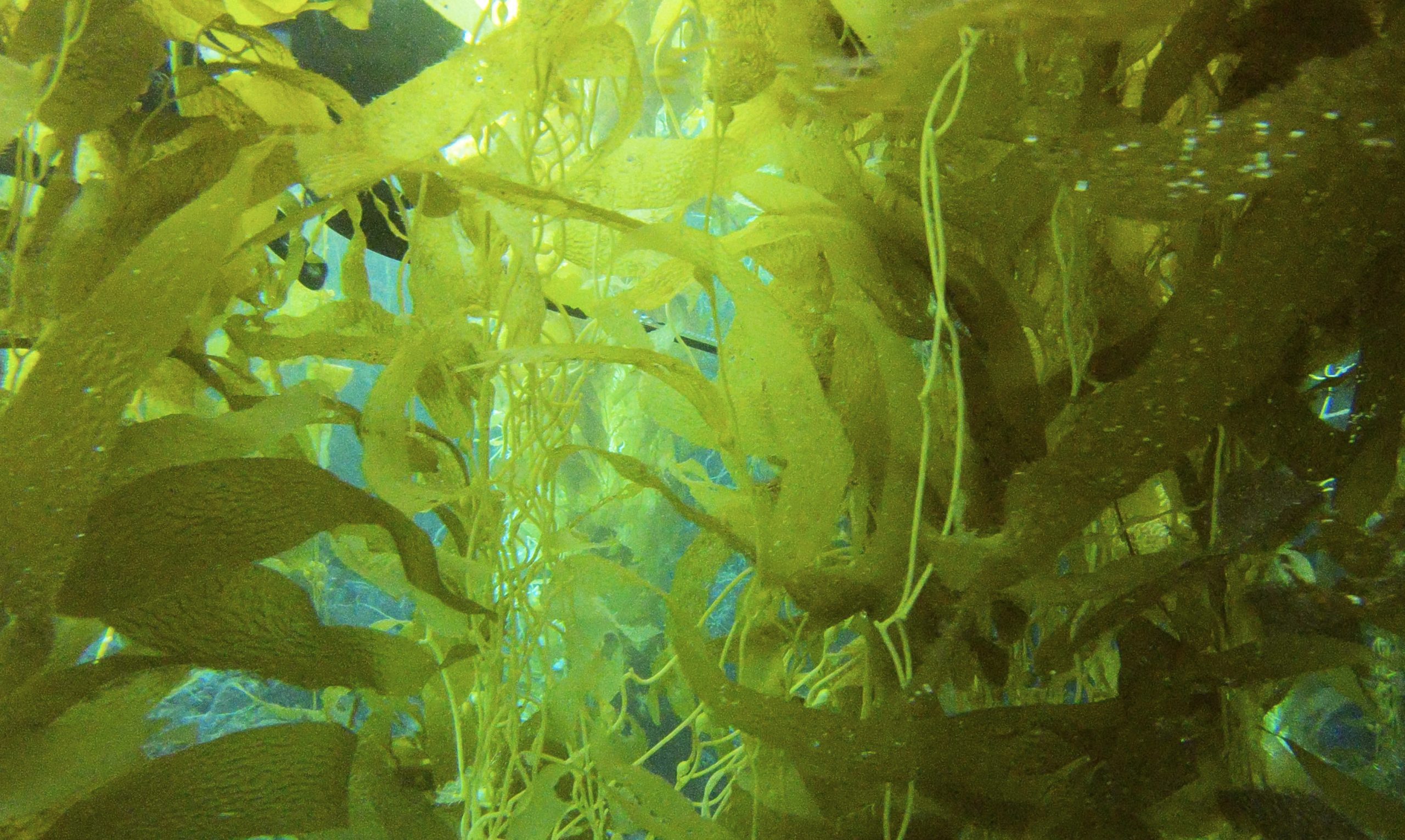
“We didn’t want to be those artists to come there and ‘discover’ things already known,” said Godlewska. “We realized how many people there are engaged with preservation.”
In research trips in 2021 and 2022, they met with scientists from the University of California Irvine and the founder of the environmental nonprofit Get Inspired. They visited the Crystal Cove State Park and learned about the Crystal Cove Conservancy and “how important it is to the local community,” said Godlewska. At a symposium at the Orange County Museum of Art, they met “incredible artists from Hawaii and New Zealand and people from indigenous tribes in southern California” who were all “stewards of the Pacific Ocean.”
And they encountered the kelp forests just off the state park’s coast. “We kind of became obsessed with the kelp,” Godlewska said. “It’s a very strange creature.”
A type of marine algae, kelp consumes carbon dioxide and produces oxygen and serves as both habitat and nourishment for a wide range of sea life. But rising water temperatures are jeopardizing the kelp forests that grow under the ocean’s surface – in some cases just 100 feet out from the California shore.
The artists’ fascination with kelp resulted in “Mare Liberum, Reimagined,” an immersive multimedia installation.
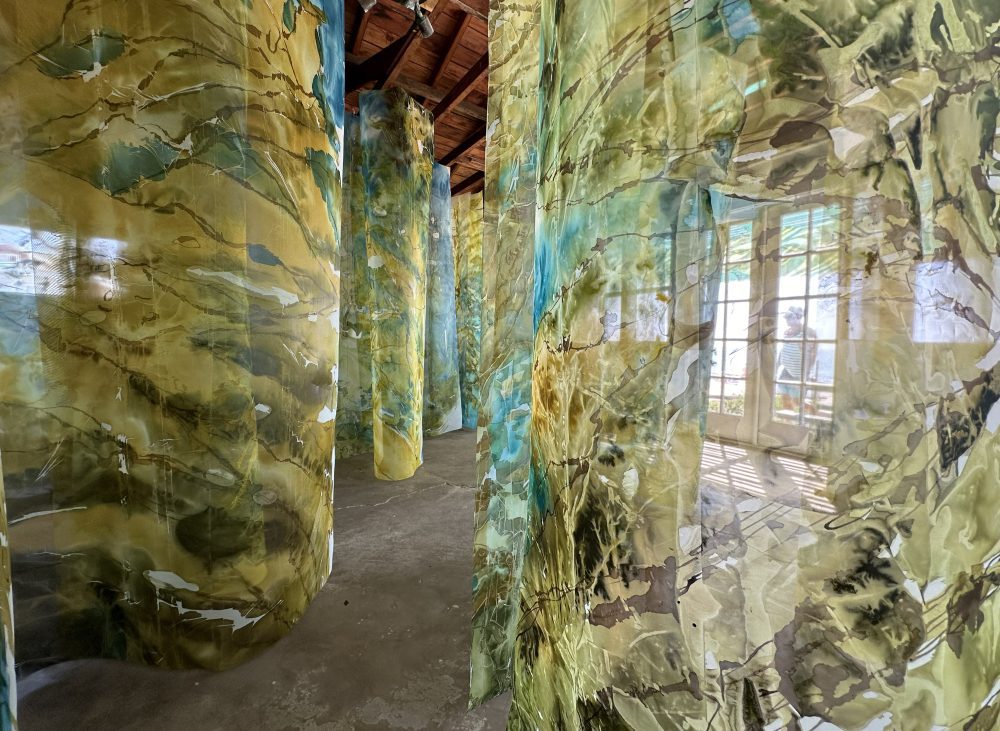

In 2023, supported in part by a Faculty Research Grant, Ranis returned to California to go scuba diving, using a 360-degree underwater video camera to film the kelp forest as he swam through it.
Afterward, he and Godlewska painted long mesh panels that hang from a ceiling installation to become a fabricated kelp forest.
Suspended amidst the painted panels are four virtual reality headsets. Put one on, and you’re immediately under water, navigating through the glowing kelp. In this VR oceanscape, you can also see and hear the marine conservation experts that Ranis and Godlewska consulted, as they explicate this fragile and vital ecosystem: University of Southern California environmental scientist Diane Kim, Get Inspired founder Nancy Caruso, oceanographer Captain Charles Moore, and Erick Valdez, education manager at San Diego Coastkeeper.
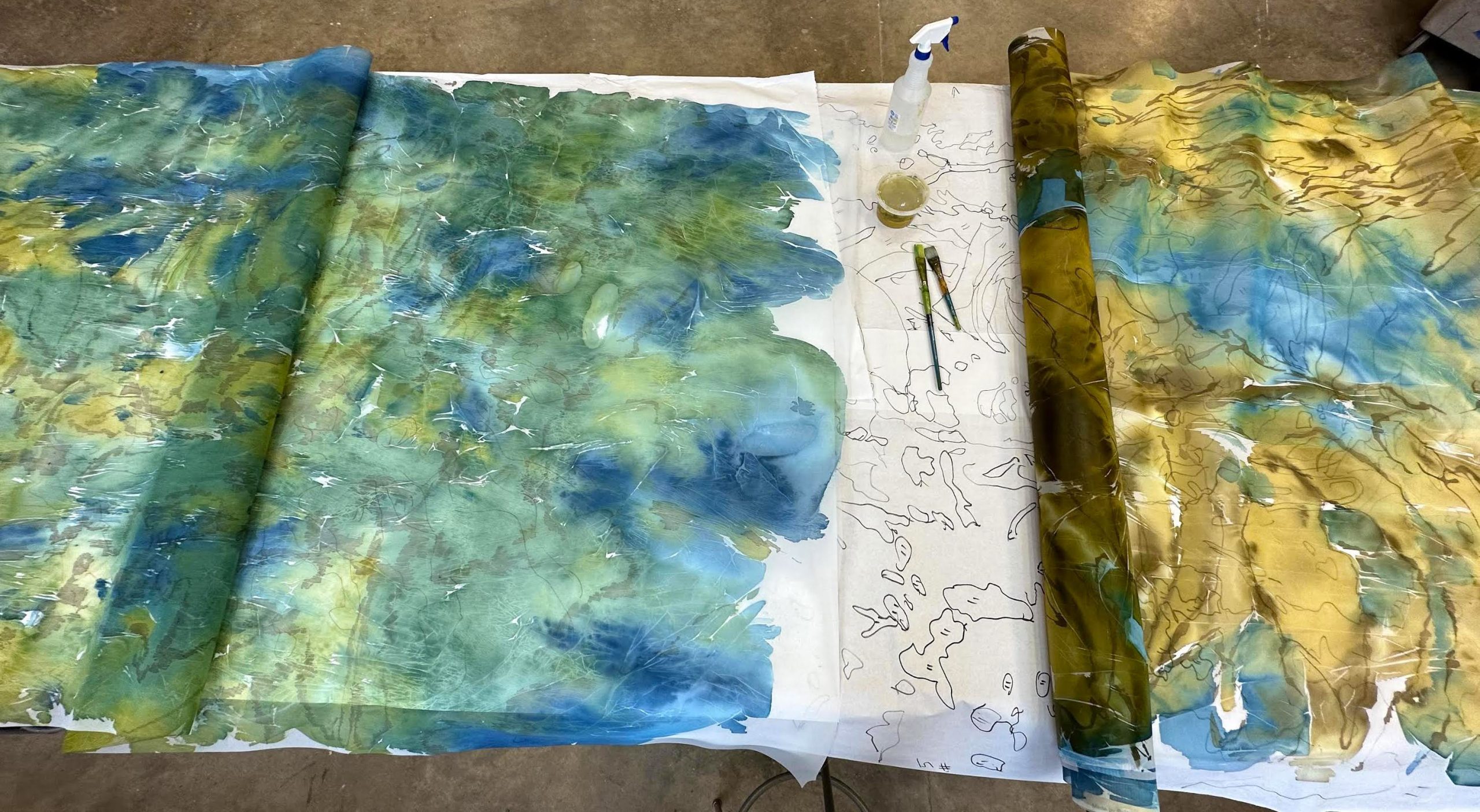
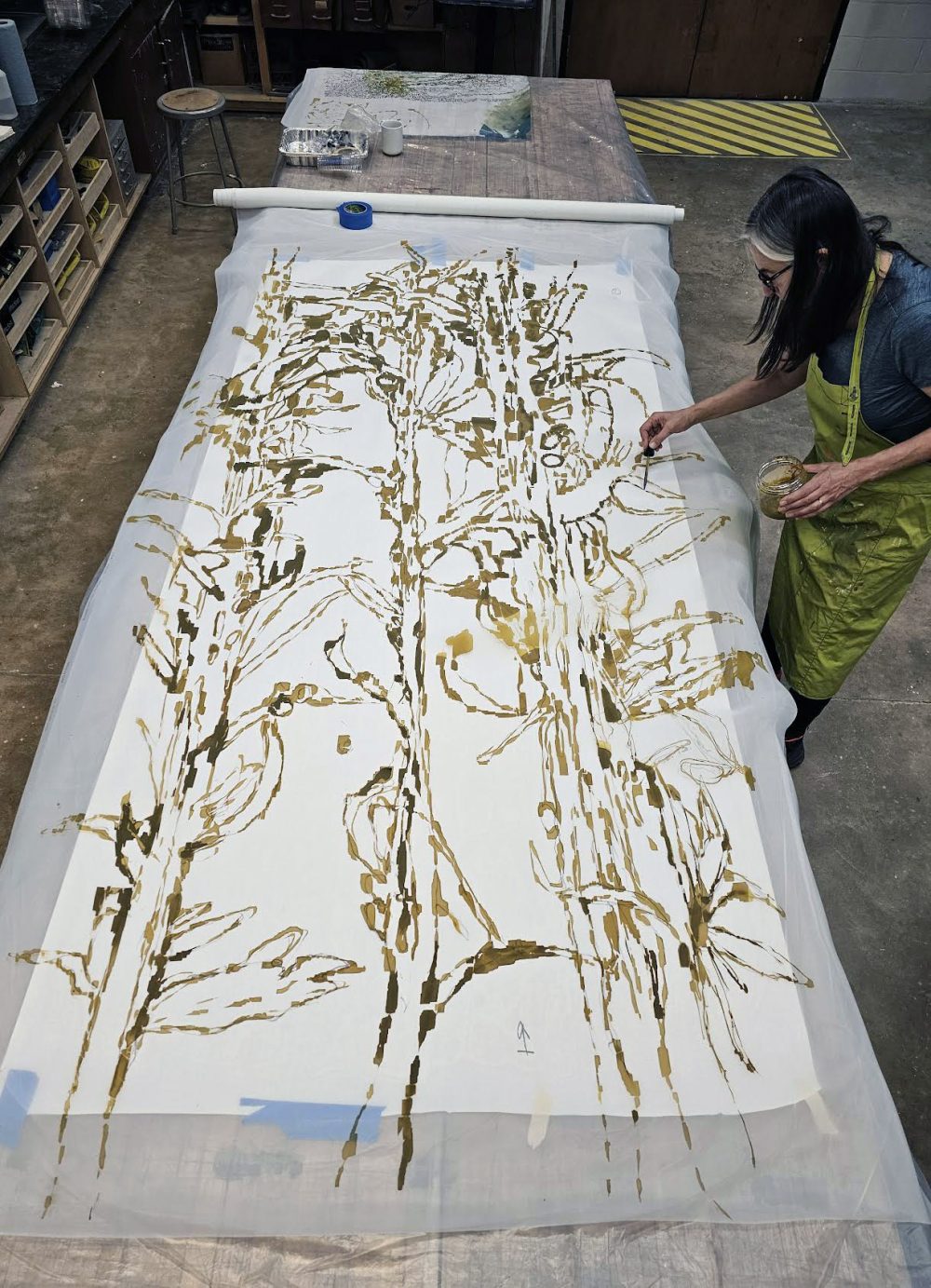
“Mare Liberum, Reimagined” is just one work in the Transformative Currents: Art and Action in the Pacific Ocean exhibition, which features 21 artists. But Ranis and Godlewska’s creation is not at the Oceanside Museum of Art or the Orange County Museum of Art, like the other works. Instead, “Mare Liberum, Reimagined” occupies a modest little shack that sits in the sand: historic Cottage #46 at Crystal Cove State Park.

“We wanted our project to be close to the kelp and to be widely accessible to people who would not visit a museum,” said Godlewska. “We wanted the exhibition to inspire people who would stumble upon it and become enchanted.”
The cabin is just yards away from the beach umbrellas, sandcastles, and surfboards. “When people enter it, they are really surprised.”
Godlewska and Ranis also hope they are motivated. Their title, “Mare Liberum,” is a Latin phrase popularly used in 16th-century Europe to promote the idea that, since they didn’t belong to any single country or kingdom, the oceans were “free” spaces for trade.
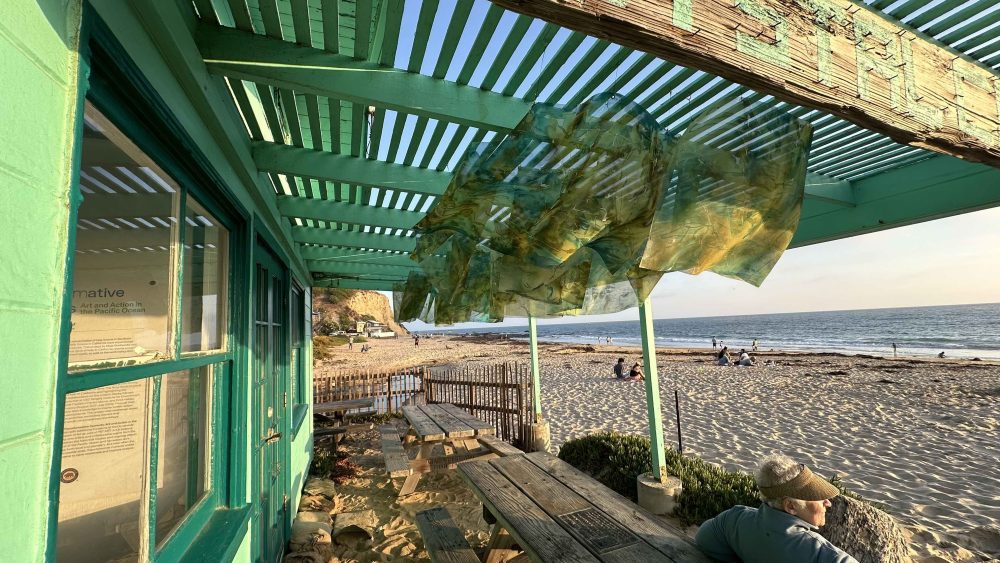

“It was freedom to pretty much exploit the ocean,” Godlewska said. But she and Ranis wish to redefine that concept: the oceans as shared space.
“The ocean is free for anyone who’d like to get involved,” Ranis told a TV news reporter.
Transformative Currents, including “Mare Liberum” is presented as part of the Getty Museum’s PST ART: Art & Science Collide, an initiative featuring more than 800 artists in more than 70 exhibitions across southern California. The massive event, which occurs every five years, is described as southern California’s “landmark arts event.”
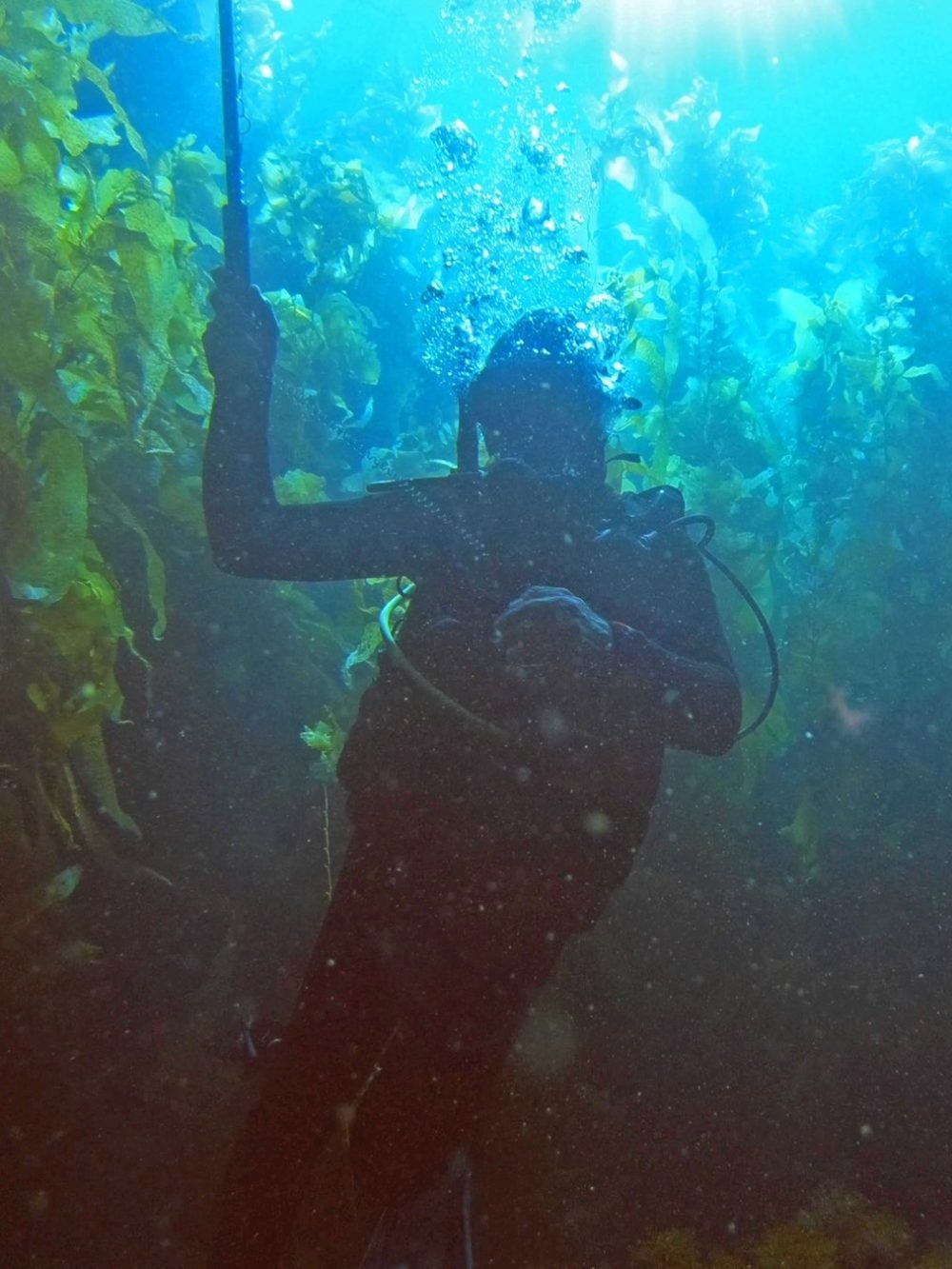
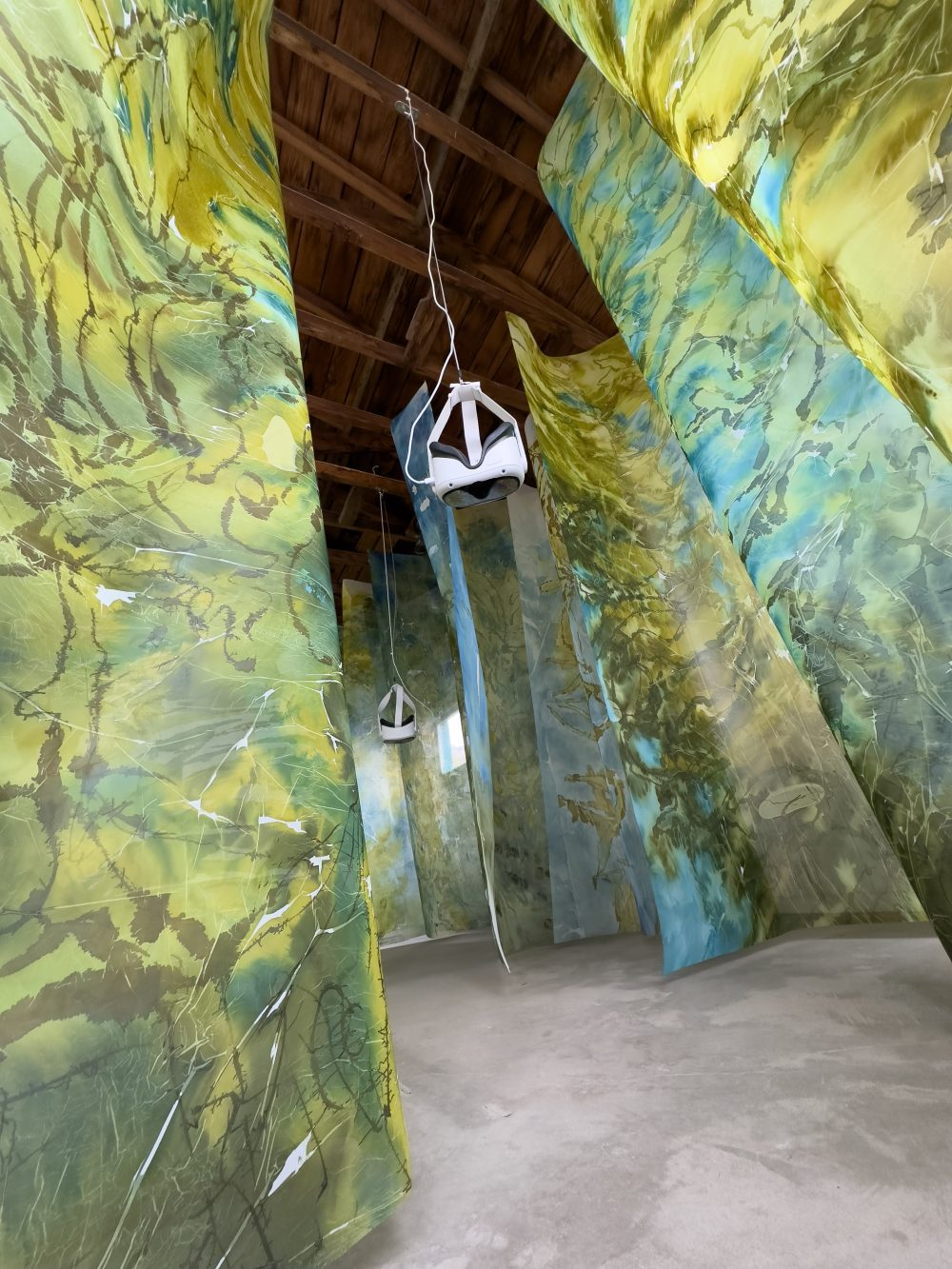
“Bringing art and science together in the way Maja and Marek’s ‘Mare Liberum, Reimagined’ does, allows people to understand the issues we face in protecting places like Crystal Cove State Park and the importance of protecting habitats like kelp forests in new ways,” Kate Wheeler, president and CEO of Crystal Cove Conservancy told the Newport Beach Independent.
“Mare Liberum, Reimagined” opened on September 21 and will be on view through January 19, 2025. Both artists participated in a public conversation at the Crystal Cove Conservancy in September.